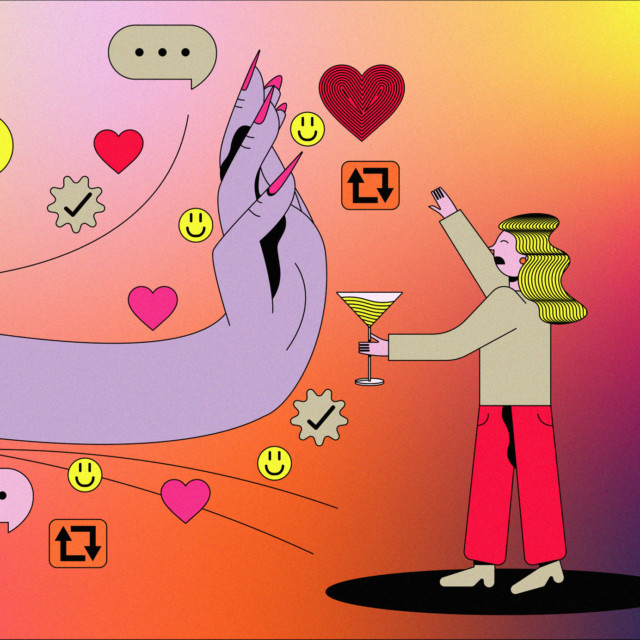When Jackie Gebel launched her blog No Leftovers in 2013, she was working as a digital media and creative strategy director for a New York City-based PR firm. Her blog content mainly featured culinary storytelling via food photos, but when a big vodka brand approached her with a paid partnership opportunity, it would become the catalyst that helped Gebel transition her full-time focus to social media. “What interested me was that at the time, there were so few liquor brands doing anything on social media, especially because of how many rules and regulations they had in place due to age and audience,” she says. “I saw the potential to get creative with my posts and use alcohol as a way to tell a larger story about food.”
In the six years since, Gebel has built up a following of nearly 360,000 on Instagram, and has collaborated with more than 35 alcohol brands, acting as everything from a host of summer parties in the Hamptons to a creator of lifestyle content in the form of photos and videos in destinations like Sorrento and St. Barts. “Mixing alcohol coverage with food and overall destination experience is a much better story than just posting a photo of a bottle,” she notes. “I also think social media like this has led to more aesthetically pleasing drinks like the Espresso Martini, Aperol Spritz, or even canned cocktails becoming popular.”
From a brand perspective, influencers can help shorten the number of steps it takes to get information and education to the general consumer — especially Gen Z and younger millennials, who spend a disproportionate amount of time on apps like Instagram and TikTok. “The value of an influencer is creating a relatability to help translate what’s going on in the bar and beverage industry from brands, bartenders, and business owners and repackage it into a digestible format,” says Gates Otsuji, global director of bars for EDITION Hotels and founder of bar and beverage consulting agency Controlled Substances. “I understand how people in the industry perceive it as an outsider without qualifications, but you kind of need that person. Otherwise, your growth is limited.”
Personalities representing brands isn’t a new phenomenon; celebrities, singers, and reality TV stars have put their names and faces on everything from coffee and cosmetics to vodka and rosé (and have a personal stake in it now, too). The 2003 film “Lost in Translation” centers around Bill Murray’s character flying to Tokyo to shoot a commercial for a Japanese whisky, and the director trying to explain the ethos of the brand through a translator. Fast forward to the age of social media, and while scrolling today, you’re sure to come across memes mocking influencers who seem just as lost in translation about the brand they’re promoting. “I think there’s this Warholian ‘15 minutes of fame’ thing that’s happening right now where you can be famous in anything,” says Aaron Moses Robin, beverage director at The Standard, High Line in New York City, who also works as a freelance set design and beverage stylist for influencers who work on beverage campaigns. “Bartender meme accounts make jabs, but I think in general, those people I imagine are not interested in this kind of [paid promotional work], so I do see a kind of separation. When an influencer is posting, it’s more about the product than the craft of bartending.”
Deke Dunne, head bartender and beverage director at Allegory DC, also understands how industry professionals can have negative perceptions of influencers. But having worked with influencers like Miami-based, Cuba-born content creator and Havana Club Rum brand ambassador Gio Gutierrez, he sees the marketing value. “I have 1,400 followers on Instagram, and they’re active, but someone like Gio has nearly 83,000 followers who are super active, so brands are going to get more bang for their buck,” he says.
When most of the world was confined during the pandemic and social media skyrocketed in use, brands and bars had no choice but to pivot from brick and mortar to a digital format as a way to keep consumers connected to the industry and, most importantly, purchasing alcohol. Using the influencer model, some members of the trade turned to social media to host virtual cocktail classes or post photography with accompanying at-home recipes. “This is as old as Michael Jordan partnering up with Nike to launch Air Jordan,” Gutierrez says. “Whether it’s Instagram, TikTok, or whatever new platform pops up tomorrow — I’m currently into Glass — it makes logical sense for brands to have a presence where the people are.”
Social media has blurred the line of what it meant to be a bartender — and what the future of bartending could look like. “I’ve been doing this for 20-plus years, and have reached thousands of bartenders and consumers, but now, there’s an amazing ability for consumers, budding bartenders, and sommeliers to be educated through social media and be more aware of our brands,” explains Tad Carducci, director of outreach and engagement for Gruppo Montenegro. “When you have the right match between brand and influencer, it’s very powerful.”
For some influencers, working with brands has opened doors into actual bartending. A few, like Boston-based blogger Frederic Yarm, have even written cocktail books. “There are more seasoned people who put blood, sweat, and tears into their craft as a bartender who maybe don’t take kindly to someone who can’t tell you how to properly cut a lemon or what drinks should be stirred,” says Juan Carlos Santana, operations beverage director at The Bastion Collection, which includes L’Atelier de Joël Robuchon, Le Jardinier, and Benno. “You may be able to replicate the motions of creating a drink on camera, but the minute an influencer steps behind an actual bar, they get snuffed out pretty fast. To be able to take care of a fully seated bar, and make everyone feel like you’re there only for them, that takes time and experience.”
